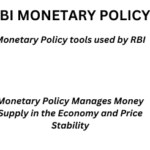International Day of Clean Air for blue skies

The very first International Day of Clean Air for blue skies was held on September 7th, 2020. The fourth annual International Day of Clean Air for blue skies will focus on the theme, ‘Together for Clean Air‘.
The Day aims to:
- Raise public awareness at all levels—individual, community, corporate and government—that clean air is important for health, productivity, the economy and the environment.
- Demonstrate the close link of air quality to other environmental/developmental challenges such as – most and foremost – climate change and the global Sustainable Development Goals.
- Promote and facilitate solutions that improve air quality by sharing actionable knowledge best practices, innovations, and success stories.
- Bring together diverse international actors working on this topic to form a strategic alliance to gain momentum for concerted national, regional and international approaches for effective air quality management.
The United Nations General Assembly adopted the resolution to hold an International Day of Clean Air for blue skies on December 19, 2019, during its 74th session and invited the United Nations Environment Programme (UNEP) to facilitate the observance of the International Day, in collaboration with other relevant organization.
IQAir’s 2022 World Air Quality Report, Delhi was found to be the forth polluted city in the world
“In 2021, none of the cities in India met the prescribed World Health Organization air quality standards of 5 micrograms per cubic meter,” stated the World Air Quality Report 2021, prepared by Swiss organization IQAir and released globally.
LEARNING WITH TIMES
PM2.5 means particulate matter in the air – caused by motor exhaust or anything combustible – that is less than 2.5 micrometers.
WHO’s air quality guidelines state that by reducing particulate matter (PM10) from 70 to 20 micrograms per cubic metre, air pollution-related deaths could be reduced by roughly 15 per cent. WHO safe limits for annual mean of PM 2.5 and PM 10 levels are 10 and 20 micrograms per cubic meter.
Airborne particles are sometimes referred to as ‘particulate matter’ or ‘PM’. They include dust, dirt, soot, smoke, and liquid droplets. Some particles are emitted directly into the air from a variety of sources that are either natural or related to human activity. Natural sources include bushfires, dust storms, pollens and sea spray.
Those related to human activity include motor vehicle emissions, industrial processes (eg electricity generation, incinerators and stone crushing), unpaved roads and woodheaters. Particles can be classified on the basis of their size, referred to as their ‘aerodynamic diameter’. ‘Coarse particles’ are those between 10 and 2.5 micrometres (µm) in diameter; ‘fine particles’ are smaller than 2.5 µm; and ‘ultrafine particles’ are smaller than 0.1 µm. Studies have linked exposure to particle pollution to a number of health problems including respiratory illnesses (such as asthma and bronchitis) and cardiovascular disease.
INDIA’S STANDARD FOR LEVEL OF POLLUTION
India has set standards for what it thinks are appropriate warnings for a particular level of pollutant. AQI help in comparing pollution levels at a glance with a colour code and a numerical value. In India, AQIs are determined based on the concentrations of seven pollutants, including PM2.5 (fine, respirable particles), sulphur dioxide (SO2), nitrogen dioxide (NO2) and carbon monoxide (CO).There are six AQI categories, namely: Good, Satisfactory, Moderately polluted, Poor, Very poor and Severe.
The Index is centred around five chief pollutants – Particulate Matter with a diameter less than 10 micrometres (PM10), Particulate Matter with a diameter of less than 2.5 micrometers (PM2.5), ozone (O3), Nitrogen Dioxide (NO2), and Carbon Monoxide (CO).






0 Comments